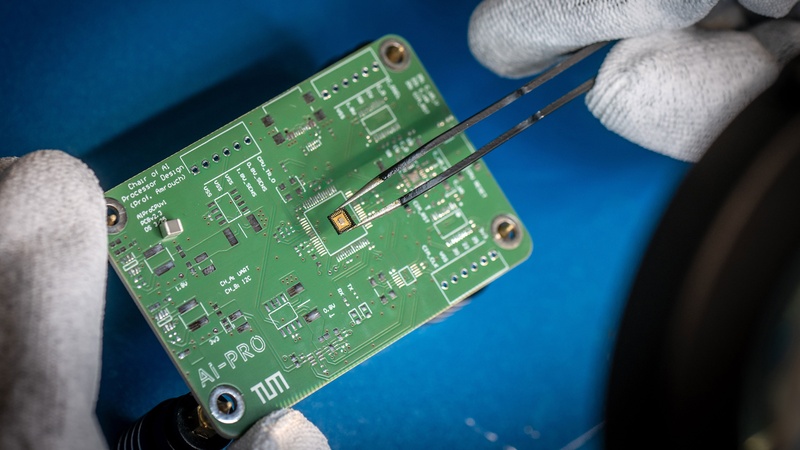An AI chip developed by researchers at the Technical University of Munich (TUM) in Germany works without a cloud server or internet connections.
Unlike existing chips, the AI Pro chip designed by the team at TUM features neuromorphic architecture. This is a type of computing architecture inspired by the structure and functioning of the human brain.
This architecture enables the chip to perform calculations on the spot, ensuring full cyber security as well as being energy efficient.
The chip employs a brain-inspired computing paradigm called ‘hyperdimensional computing’. With the computing and memory units of the chip located together, the chip recognises similarities and patterns, but does not require millions of data records to learn.
The chip’s designer is Professor Hussam Amrouch, the chair of AI processor design at TUM. How the chip works is that instead of being shown countless images of cars, as with the deep learning method used in conventional AI chips, the AI Pro chip combines various pieces of information, such as the fact that a car has four wheels, usually drives on the road and can have different shapes.
This is the same way that the human brain works. Amrouch said: “Humans also draw inferences and learn through similarities.” Having designed the chip, he had the first prototypes produced by semiconductor manufacturer GlobalFoundries in Dresden.
The prototype AI Pro chip was then used to do a sample task. During this process the chip only consumed 24 microjoules. This is a “record value”, according to Amrouch, as comparable chips require 10-100 times the energy.
He said: “This mix of modern processor architecture, algorithm specialisation and innovative data processing makes the AI chip something special.”
